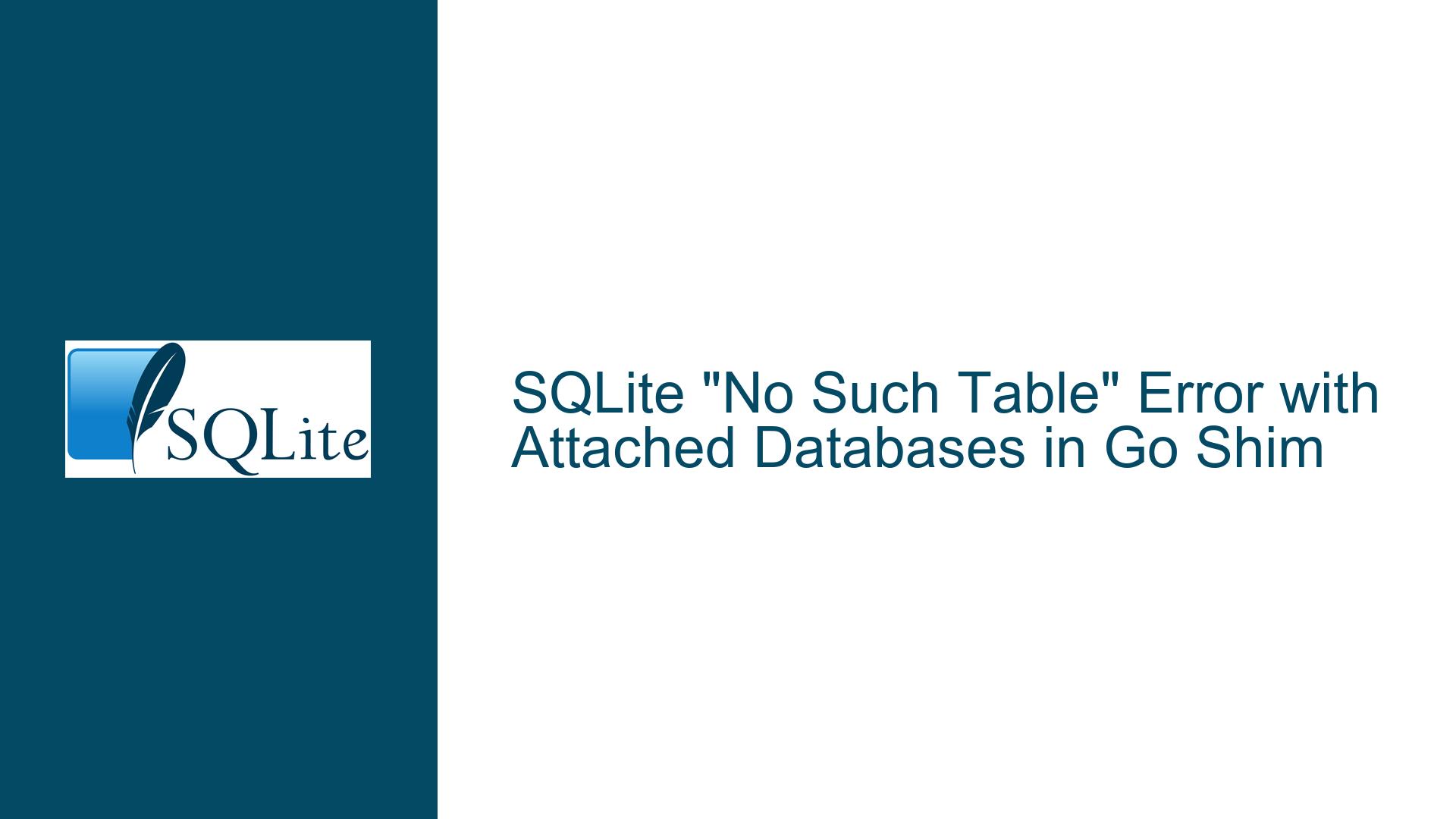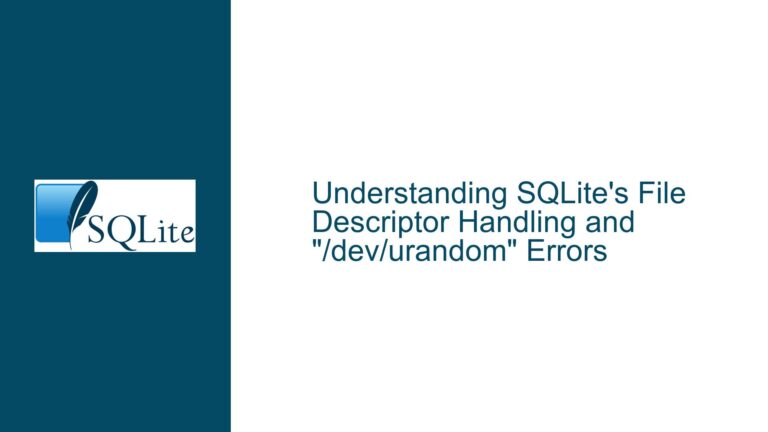SQLite “No Such Table” Error with Attached Databases in Go Shim
Issue Overview: Attached Database Table Not Found in Nested Queries
The core issue revolves around a "no such table" error occurring in SQLite when executing nested queries involving attached databases, specifically when using the Go programming language’s SQLite shim. The error manifests when a query is executed within a loop that processes results from an initial query. The initial query joins tables from the main database and an attached database, and the nested query attempts to perform a similar join. However, the nested query fails with a "no such table" error, indicating that the attached database is no longer accessible.
The workaround provided involves re-attaching the database before executing the nested query, which resolves the issue. This behavior suggests that the connection state, including attached databases, is not preserved between queries in the Go shim. This issue is particularly perplexing because it does not occur when using the SQLite CLI or other language bindings like Python’s APSW, indicating that the problem is specific to the Go shim’s implementation.
Possible Causes: Connection Pooling and State Management in Go Shim
The root cause of this issue lies in the Go shim’s handling of database connections. The Go shim implements a connection pool, which is a common practice in database drivers to improve performance by reusing connections. However, this approach introduces complexity when dealing with SQLite’s connection-specific state, such as attached databases.
In SQLite, attached databases are associated with a specific connection. When a connection is returned to the pool and later reused, the attached databases may no longer be available unless they are re-attached. This behavior is consistent with the observed issue, where the nested query fails because the connection used for the nested query does not have the attached database available.
The Go shim’s connection pooling mechanism appears to be the primary culprit. When the initial query is executed, the connection used has the database attached. However, when the nested query is executed, a different connection from the pool is used, which does not have the database attached. This results in the "no such table" error.
Additionally, the Go shim’s design may not account for the need to preserve connection-specific state across queries. This is a common challenge when implementing connection pooling for databases that maintain state at the connection level, such as SQLite. Other language bindings, like Python’s APSW, handle this by ensuring that the same connection is used for nested queries, preserving the attached databases and other connection-specific state.
Troubleshooting Steps, Solutions & Fixes: Addressing Connection Pooling and State Preservation
To resolve the "no such table" error when using the Go shim with SQLite, several approaches can be taken, each addressing different aspects of the issue.
1. Re-attaching the Database Before Nested Queries
The workaround provided in the discussion involves re-attaching the database before executing the nested query. This approach ensures that the attached database is available for the nested query, regardless of which connection from the pool is used. While this solution works, it is not ideal as it requires additional code and may impact performance due to the overhead of repeatedly attaching the database.
2. Using a Connection Hook to Preserve State
The Go shim provides a connection hook mechanism that can be used to execute custom logic when a connection is created or retrieved from the pool. This mechanism can be leveraged to re-attach the database whenever a connection is reused. By implementing a connection hook, the attached database can be automatically re-attached, ensuring that it is available for all queries executed on that connection.
To implement this solution, you would define a connection hook function that attaches the database and register it with the Go shim. This function would be called whenever a connection is retrieved from the pool, ensuring that the attached database is always available.
3. Disabling Connection Pooling
Another approach is to disable connection pooling in the Go shim, forcing it to use a single connection for all queries. This ensures that the attached database remains available for all queries, including nested queries. However, this approach may impact performance, especially in applications with high concurrency, as it eliminates the benefits of connection pooling.
To disable connection pooling, you can set the maximum number of open connections to one when configuring the database connection. This ensures that only one connection is used, preserving the attached database and other connection-specific state.
4. Using a Different SQLite Driver
If the Go shim’s behavior is not suitable for your application, you may consider using a different SQLite driver for Go that does not implement connection pooling or handles connection-specific state more effectively. Some alternative drivers may provide better support for attached databases and other connection-specific features.
5. Reviewing and Modifying the Go Shim’s Implementation
For advanced users or those with specific requirements, reviewing and modifying the Go shim’s implementation may be an option. This approach involves understanding the shim’s connection pooling mechanism and making changes to ensure that connection-specific state, such as attached databases, is preserved across queries. This solution requires a deep understanding of both the Go shim and SQLite’s internals and is not recommended for most users.
Conclusion
The "no such table" error when using attached databases in SQLite with the Go shim is a result of the shim’s connection pooling mechanism and its handling of connection-specific state. By understanding the underlying causes and exploring the various solutions, you can address this issue and ensure that your application works as expected. Whether you choose to re-attach the database, use a connection hook, disable connection pooling, or switch to a different driver, each approach has its trade-offs and should be selected based on your application’s specific requirements and constraints.






